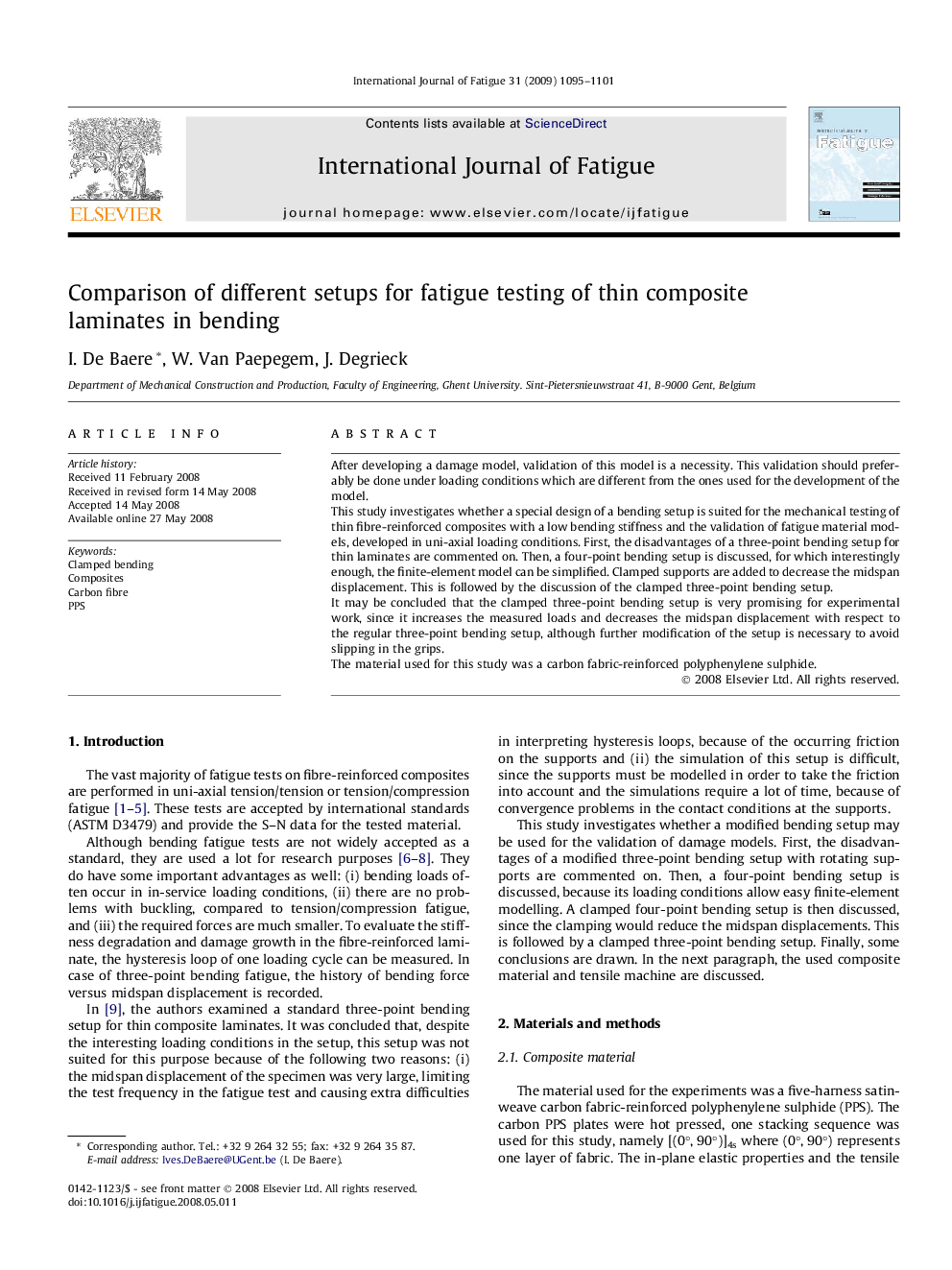| Article ID | Journal | Published Year | Pages | File Type |
|---|---|---|---|---|
| 775776 | International Journal of Fatigue | 2009 | 7 Pages |
After developing a damage model, validation of this model is a necessity. This validation should preferably be done under loading conditions which are different from the ones used for the development of the model.This study investigates whether a special design of a bending setup is suited for the mechanical testing of thin fibre-reinforced composites with a low bending stiffness and the validation of fatigue material models, developed in uni-axial loading conditions. First, the disadvantages of a three-point bending setup for thin laminates are commented on. Then, a four-point bending setup is discussed, for which interestingly enough, the finite-element model can be simplified. Clamped supports are added to decrease the midspan displacement. This is followed by the discussion of the clamped three-point bending setup.It may be concluded that the clamped three-point bending setup is very promising for experimental work, since it increases the measured loads and decreases the midspan displacement with respect to the regular three-point bending setup, although further modification of the setup is necessary to avoid slipping in the grips.The material used for this study was a carbon fabric-reinforced polyphenylene sulphide.
